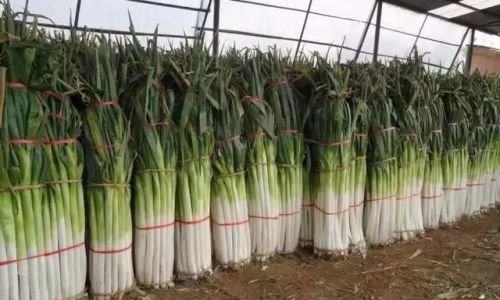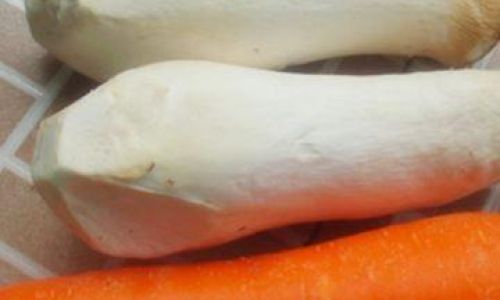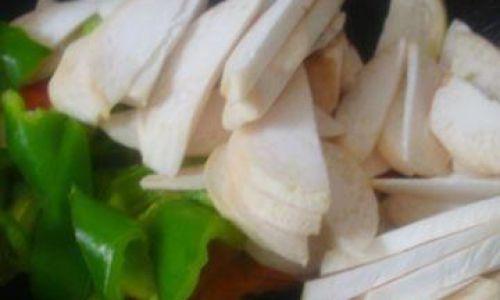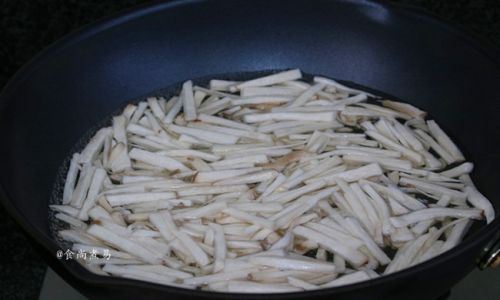Introduction
Summer in northern China is a season of sweltering heat, where temperatures often soar above 35°C (95°F). In regions like Beijing, Shandong, and Hebei, the oppressive humidity and scorching sun call for culinary strategies that prioritize refreshment, hydration, and lightness. Unlike the hearty, stew-like dishes favored in winter, summer meals in northern China revolve around vibrant, crisp, and tangy side dishes that stimulate the appetite without weighing down the digestive system. These dishes often rely on seasonal vegetables, quick cooking methods, and bold flavors that cut through the heat. From chilled cold appetizers to zingy stir-fries, northern Chinese summer cuisine is a masterclass in balancing tradition with practicality. This article explores the most beloved summer side dishes, their cultural significance, and the secrets behind their ability to transform a mundane meal into a feast for the senses.
Cold Dishes: The Cornerstone of Summer Refreshment
Cold dishes, or liang ban (凉拌), are the backbone of northern Chinese summer dining. These no-cook or minimal-cook preparations preserve the natural crunch and nutrients of vegetables while delivering a burst of flavor. Here are some iconic examples:
1. Cucumber Salad with Garlic and Vinegar (拍黄瓜, Pai Huang Gua)
A ubiquitous summer staple, Pai Huang Gua is as simple as it is satisfying. Fresh cucumbers are smashed lightly to crack their flesh, allowing the tangy dressing to seep into every crevice. The dressing—a blend of minced garlic, black vinegar, soy sauce, chili oil, and a pinch of sugar—creates a symphony of sweet, sour, and spicy notes. The cucumbers’ high water content makes this dish incredibly hydrating, while garlic’s antimicrobial properties offer a health boost in humid weather.

2. Suan Ni Bai Rou (蒜泥白肉)
Though technically a cold meat dish, Suan Ni Bai Rou is a summer favorite for its balance of richness and acidity. Thinly sliced boiled pork belly is draped over a bed of cucumbers or bean sprouts, then drowned in a garlicky chili oil sauce. The pork’s fattiness is countered by the vinegar’s sharpness, creating a dish that is both indulgent and revitalizing.
3. Spinach Salad with Peanuts and Sesame (芝麻菠菜)
Blanched spinach leaves are chilled, then tossed with toasted sesame seeds, crushed peanuts, and a dressing of soy sauce, vinegar, and sesame oil. The earthy bitterness of spinach pairs beautifully with the nuts’ toasty aroma, while the sesame oil adds a layer of richness without heaviness.
4. Century Egg and Tofu Salad (皮蛋豆腐)
Silken tofu forms a creamy base for sliced century eggs—a delicacy preserved in alkaline clay—which are then drizzled with a mixture of soy sauce, vinegar, and cilantro. The tofu’s coolness soothes the palate, while the century egg’s sulfurous tang adds intrigue. This dish is a study in contrasts: soft vs. firm, mild vs. pungent.
Stir-Fried Delights: Quick, Light, and Full of Flavor
Stir-frying allows northern cooks to retain vegetables’ crispness while imbuing them with complex flavors. These dishes are often cooked in under five minutes, making them ideal for hot days when lingering over a stove is unappealing.
1. Eggplant with Garlic Sauce (鱼香茄子)
While technically a Sichuanese dish, Yu Xiang Qie Zi has become a pan-Chinese favorite. Eggplant wedges are deep-fried until tender, then tossed in a sweet-sour-spicy sauce made from garlic, ginger, chili bean paste, and sugar. The dish’s umami-rich sauce clings to the eggplant’s silken flesh, creating a texture that’s both velvety and addictive.
2. Stir-Fried Potato, Green Pepper, and Eggplant (地三鲜)
Di San Xian (“three earthly delights”) combines three humble vegetables into a dish that’s greater than the sum of its parts. Sliced potatoes, eggplant, and green peppers are stir-fried separately to achieve crispy edges, then united in a savory sauce of soy sauce, garlic, and a touch of sugar. The result is a medley of contrasting textures and earthy flavors.
3. Tomato and Egg Stir-Fry (西红柿炒鸡蛋)
A quintessential home-cooked dish, this simple preparation showcases the natural sweetness of ripe tomatoes. Eggs are scrambled until fluffy, then combined with tomato wedges in a light sauce of soy sauce and sugar. The dish’s bright red hue and tangy-sweet profile make it a crowd-pleaser, especially when served with steamed rice.
4. Dry-Fried Green Beans (干煸四季豆)
Green beans are stir-fried until blistered and slightly charred, then tossed with minced pork, dried chilies, and Sichuan peppercorns. The beans’ crispness persists despite the high heat, while the spicy, numbing seasonings awaken the taste buds. This dish is a testament to the magic of wok hei—the breath of the wok—which imparts a smoky depth.
Hearty Soups and Stews: Light Yet Satisfying
Contrary to popular belief, northern Chinese summers are not devoid of soups. Instead, they favor broths that are clear, nourishing, and designed to replenish fluids lost to sweating.
1. Cold Tomato and Sour Plum Soup (酸梅汤)
While technically a beverage, Suan Mei Tang is often served as a soup course. Dried sour plums, hawthorn berries, and rock sugar are simmered until the liquid turns ruby-red, then chilled. The result is a tart, sweet elixir that quenches thirst and aids digestion—a perfect antidote to summer fatigue.
2. Winter Melon and Pork Rib Soup (冬瓜排骨汤)
Winter melon, despite its name, thrives in summer. Its mild, watery flesh absorbs the flavors of pork ribs, ginger, and dates in this clear, comforting broth. The soup is prized for its ability to clear internal heat, making it a staple in traditional Chinese medicine-inspired diets.
3. Sour and Spicy Soup (酸辣汤)
A pan-regional favorite, this soup combines tofu, bamboo shoots, and wood ear mushrooms in a vinegar-spiked broth thickened with cornstarch. The soup’s name—suan la tang—translates to “sour and spicy soup,” a description that undersells its complexity. Black pepper and chili oil add a fiery kick, while the vinegar’s acidity cuts through the heat’s lethargy.
Pickled and Fermented Treats: Preserving the Season’s Bounty
Fermentation is a time-honored method of preserving summer vegetables while creating probiotic-rich condiments. These pickles add a tangy crunch to meals and are often eaten in small quantities as palate cleansers.
1. Chinese Pickled Cucumber (酱黄瓜)
Cucumbers are marinated in a brine of soy sauce, vinegar, sugar, and spices like star anise and cinnamon. The result is a crisp, savory pickle that balances saltiness with a hint of sweetness. These pickles are often served alongside congee or as a relish for grilled meats.

2. Suan Cai (酸菜)
A staple of northeastern China, suan cai is made by fermenting napa cabbage in saltwater for weeks. The cabbage’s crunch softens into a sour, slightly funky condiment that’s used in soups, stir-fries, and dumplings. Its probiotic properties aid digestion, making it a summer essential.
3. Spicy Radish Pickles (辣萝卜)
Daikon radishes are sliced into thin strips, then tossed with chili flakes, Sichuan pepper, and sugar before being left to ferment. The pickles’ fiery heat and crisp texture make them addictive snacks or garnishes for noodles and rice.
Quick and Easy Favorites: When Time Is of the Essence
For busy households, speed and simplicity are paramount. These dishes require minimal prep but deliver maximum flavor.
1. Cold Noodles with Sesame Sauce (芝麻酱拌面)
Wheat noodles are boiled, rinsed under cold water, then tossed with a thick sesame paste sauce, cucumber ribbons, and julienned eggs. The dish’s creaminess comes from the sesame paste, while the cucumbers add a refreshing crunch. Variations might include minced pork or chili oil for extra heat.
2. Instant Noodle Upgrade (升级方便面)
Even instant noodles get a summer makeover. The noodles are boiled, drained, and mixed with a blend of soy sauce, vinegar, chili oil, and sesame oil. Toppings like blanched bok choy, a soft-boiled egg, or leftover shredded chicken elevate this humble meal into a satisfying feast.
The Role of Condiments: Elevating Simplicity
Northern Chinese summer cooking relies heavily on condiments to add depth without complexity. Chili oil, black vinegar, fermented bean paste, and garlic are staples. A well-stocked pantry might also include doubanjiang (spicy bean paste), Shaoxing wine, and toasted sesame seeds. These ingredients transform humble vegetables into dishes that feel celebratory.
Cultural Significance: More Than Just Food
Summer dishes in northern China are deeply intertwined with tradition and family. Many recipes are passed down through generations, with grandmothers teaching grandchildren the perfect ratio of vinegar to soy sauce in a cucumber salad. These dishes also reflect regional identities: Shandong’s emphasis on seafood, Beijing’s love of noodles, and Hebei’s reliance on hearty grains.
Moreover, summer is a season of festivals, from the Dragon Boat Festival (when zongzi, sticky rice dumplings, are eaten) to the Qingming Festival (when cold dishes dominate feasts). These occasions reinforce the importance of communal eating, with side dishes often served family-style to encourage sharing.
Modern Adaptations: Blending Old and New
While tradition remains strong, younger chefs and home cooks are experimenting with global ingredients. Cucumber salads might incorporate feta cheese or balsamic vinegar, while stir-fries could feature avocado or quinoa. These fusions retain the essence of northern Chinese summer cooking—refreshing, bold, and vegetable-forward—while embracing contemporary tastes.
Conclusion
Northern Chinese summer side dishes are a testament to the region’s culinary ingenuity. By prioritizing freshness, texture, and balance, these dishes transform simple ingredients into memorable meals. Whether it’s the garlic-laced crunch of a cucumber salad or the smoky complexity of a wok-seared eggplant, each plate tells a story of adaptation, resilience, and the enduring joy of sharing food with loved ones. As temperatures rise, these recipes serve as both practical solutions and cultural touchstones, reminding us that even in the heat of summer, the kitchen remains a place of creativity and comfort.






0 comments